Gallery: Symbols & Metaphors
Children often use play to express experiences and emotions symbolically — these images show how everyday objects can hold deeper meaning. From mythical creatures to imaginative scenes, symbolic play helps children process feelings safely.
-
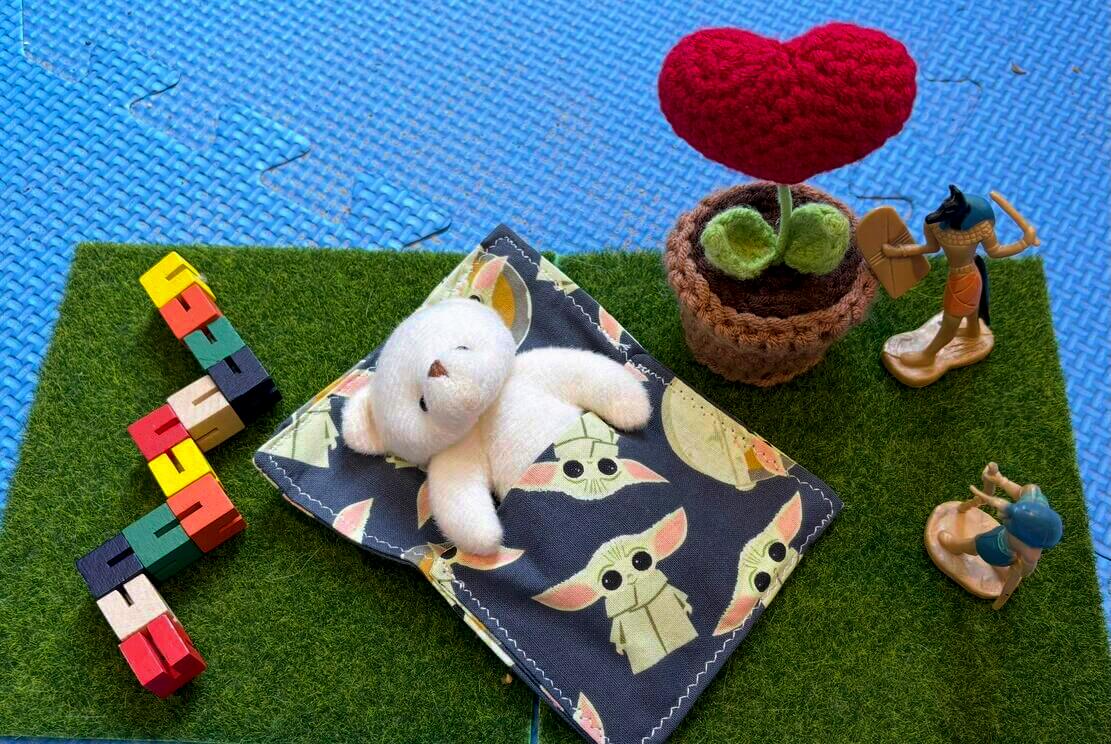
Working With Traumatised Children
This scene symbolises how Play Therapy offers safety and containment for traumatised children — allowing them to process overwhelming experiences at their own pace, through symbolic figures, nurturing images, and protective play environments.
-
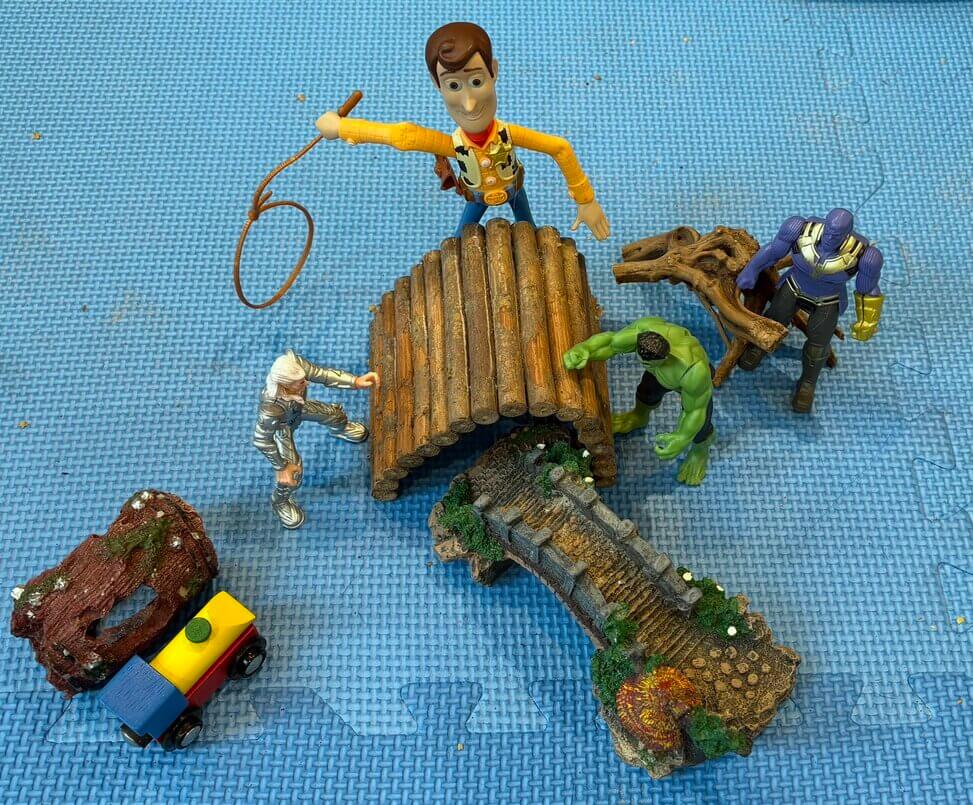
When Children Move To A New Family
Children sometimes use play to represent complex life transitions — such as moving between homes or joining a new family. In this scene, figures symbolically bridge a gap, suggesting themes of support, challenge, and adjustment during change.
-
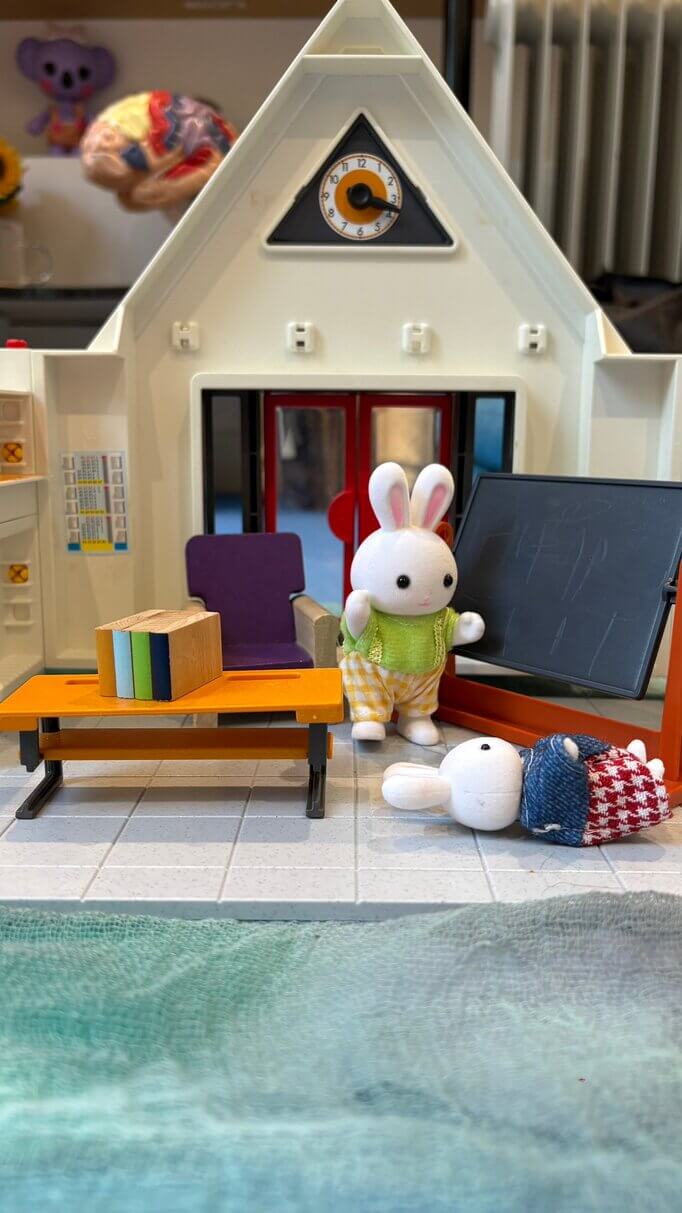
Emotional Based School Avoidance
In this school scene, a rabbit figure lies collapsed on the floor while another stands nearby — expressing how children may symbolise anxiety, overwhelm, or fear of attending school. Play therapy can help explore these feelings safely and without pressure.
-
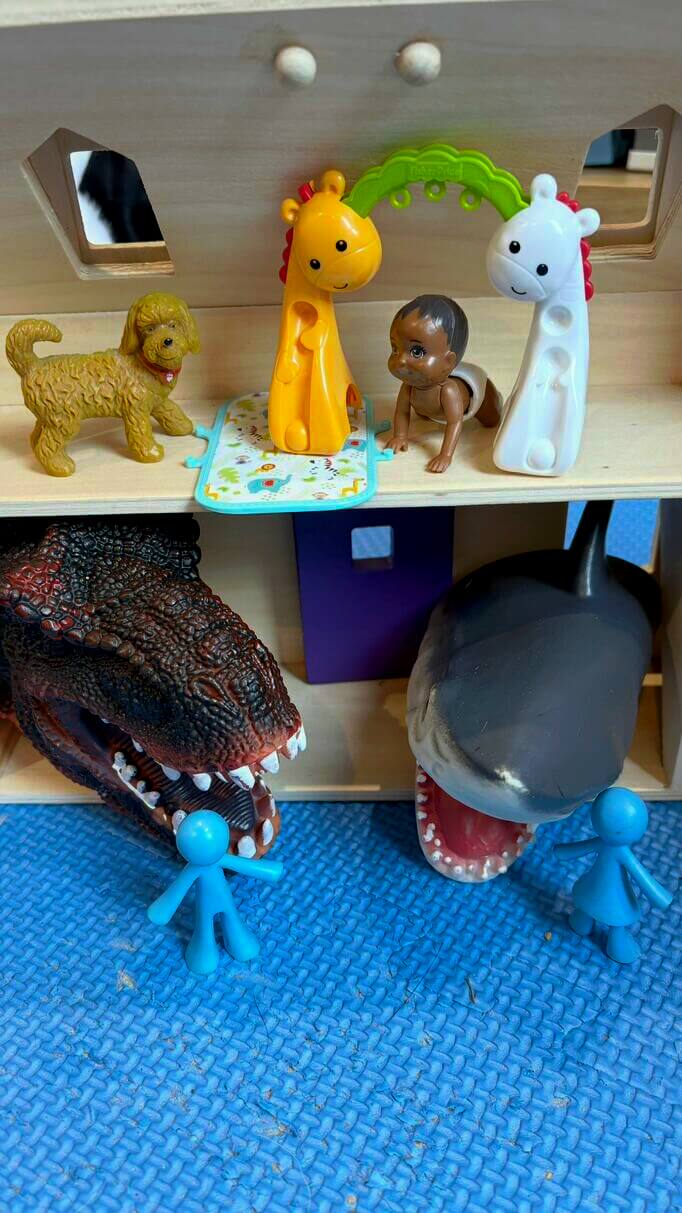
Divorce And Separation
Two contrasting play scenes in a wooden dollhouse – one calm and nurturing, the other full of conflict and danger – symbolising the emotional split and challenges that children may associate with parental separation or divorce.
-
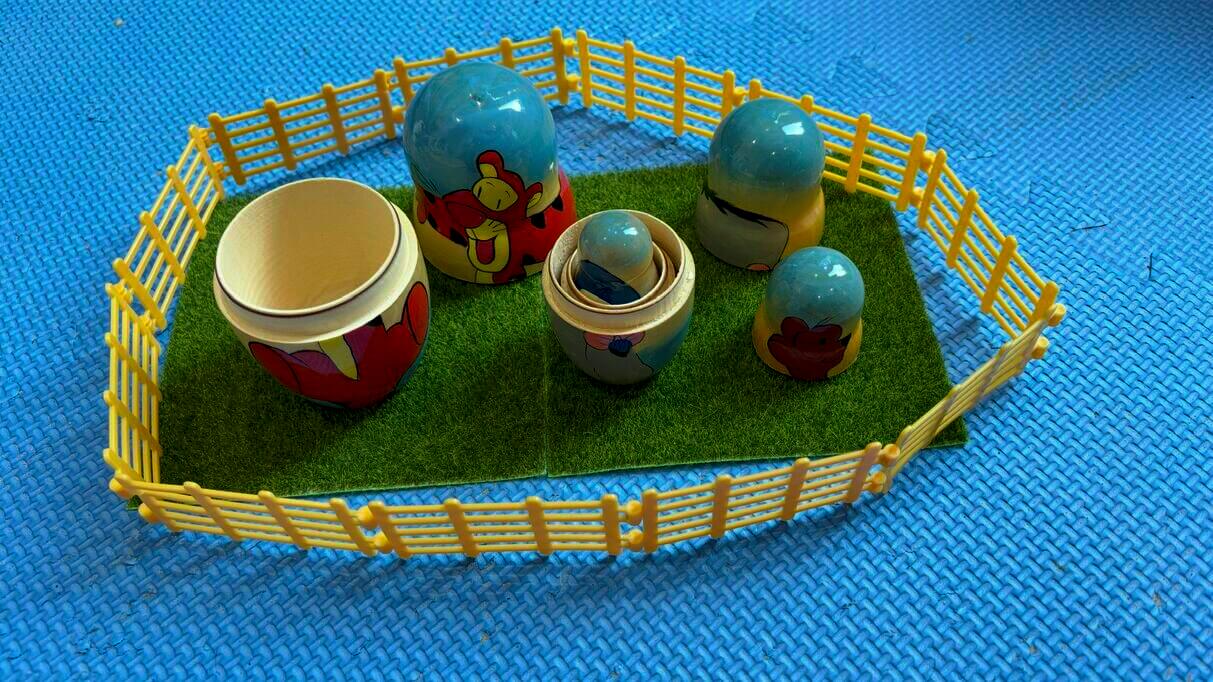
Containment And Inner Mental Space
Nesting dolls offer a powerful metaphor for containment, boundaries, and inner life. In Play Therapy, children may explore themes of identity, security, or self-protection using toys like these — visually expressing what’s hidden, layered, or protected within.
-
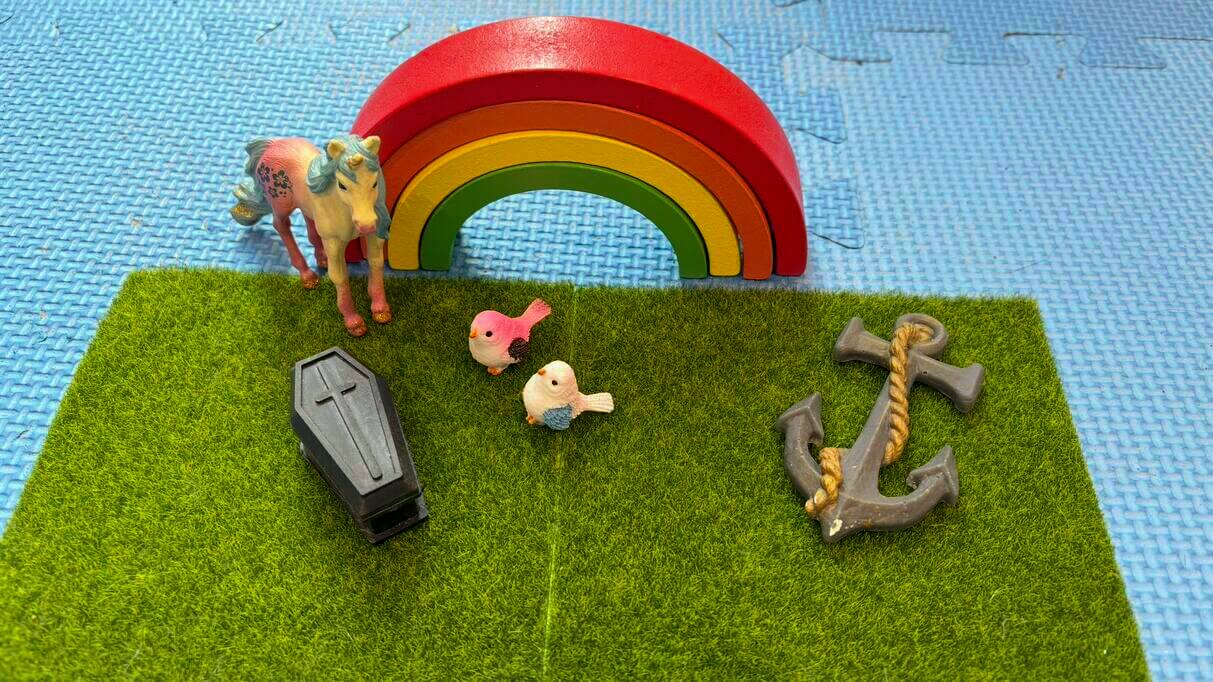
Bereavement And Loss
In Play Therapy, themes of death, grief, and transformation may emerge through symbolic arrangements like this one. The objects — a rainbow, anchor, small coffin, and animals — invite the child to explore feelings of loss, memory, and connection at their own pace and in their own language.
-
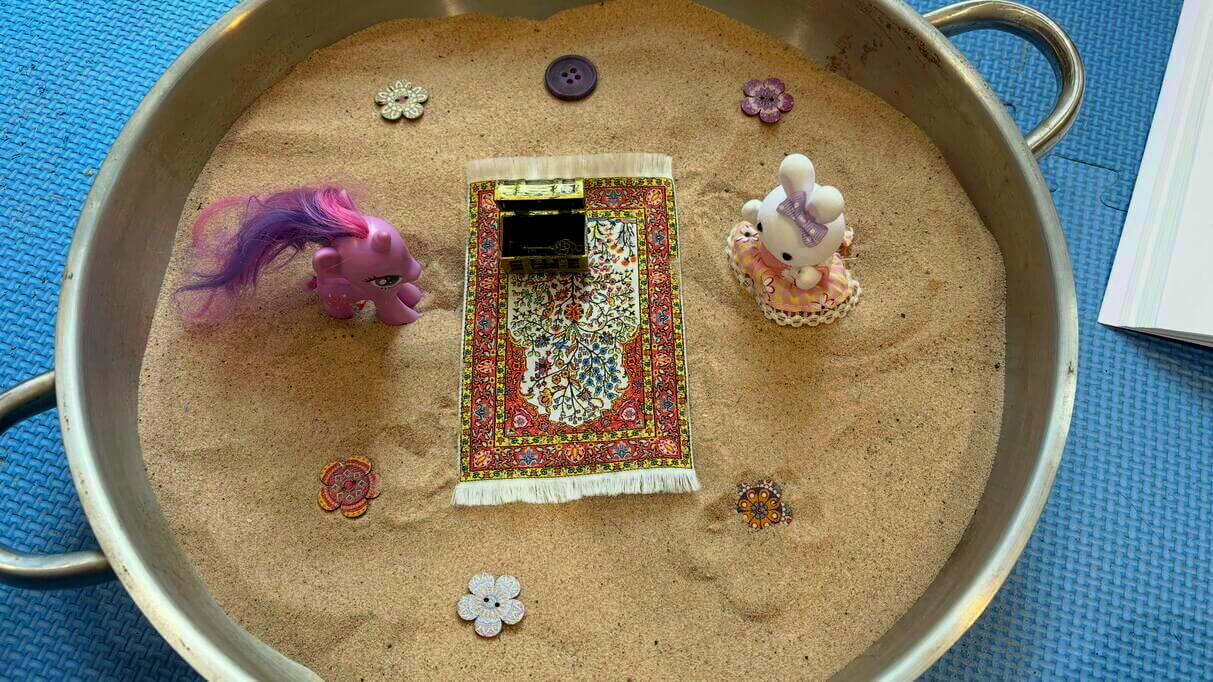
Approaches to Play Therapy
A symbolic scene arranged in a sand tray — where figures, a decorative rug, and a special box invite storytelling, imagination, and perhaps echoes of ritual or spirituality. In Play Therapy, children may explore cultural or emotional themes in ways that are meaningful to them.
-
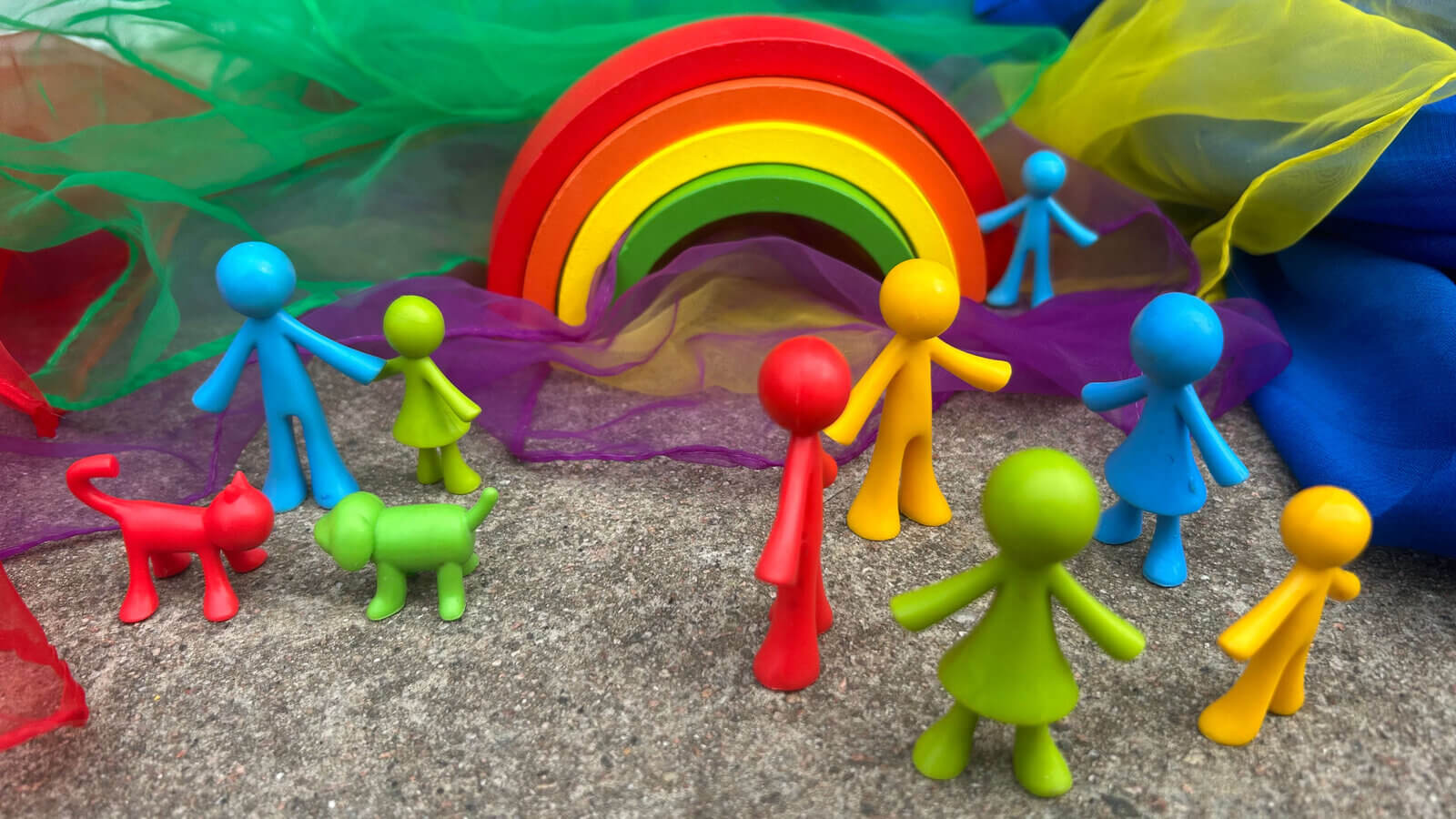
Rainbow Family Figures
These colourful figures are often used in Play Therapy to represent families, relationships, and emotions. Children may use them symbolically to express inner worlds and dynamics they can't yet articulate in words.
-
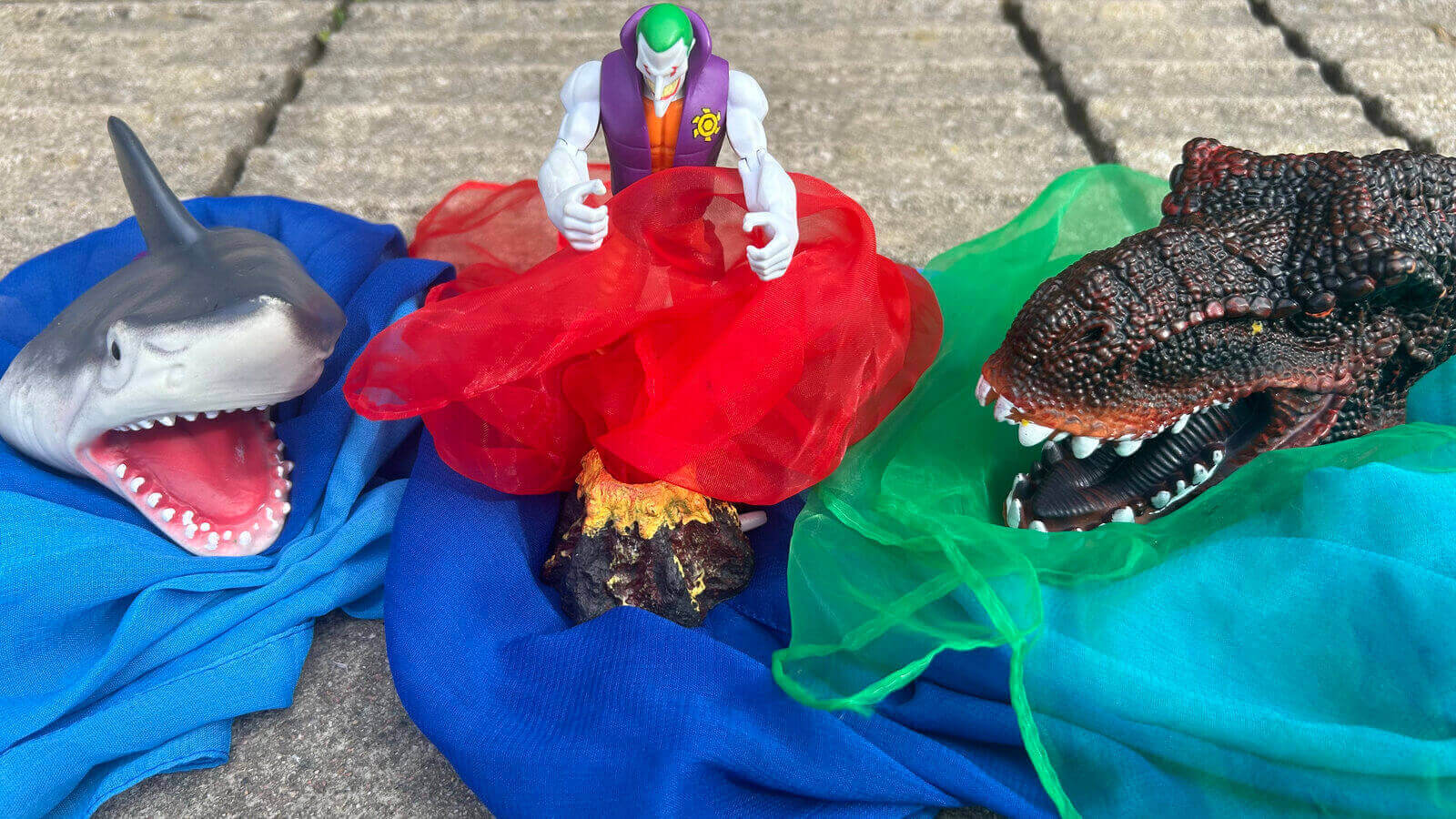
Dinosaur, Shark & Joker Scene
This scene blends symbolic elements of danger and confrontation. Children may use these figures — a dinosaur, a shark, and a villain — to act out intense feelings, challenges, or experiences that are difficult to name directly.
-
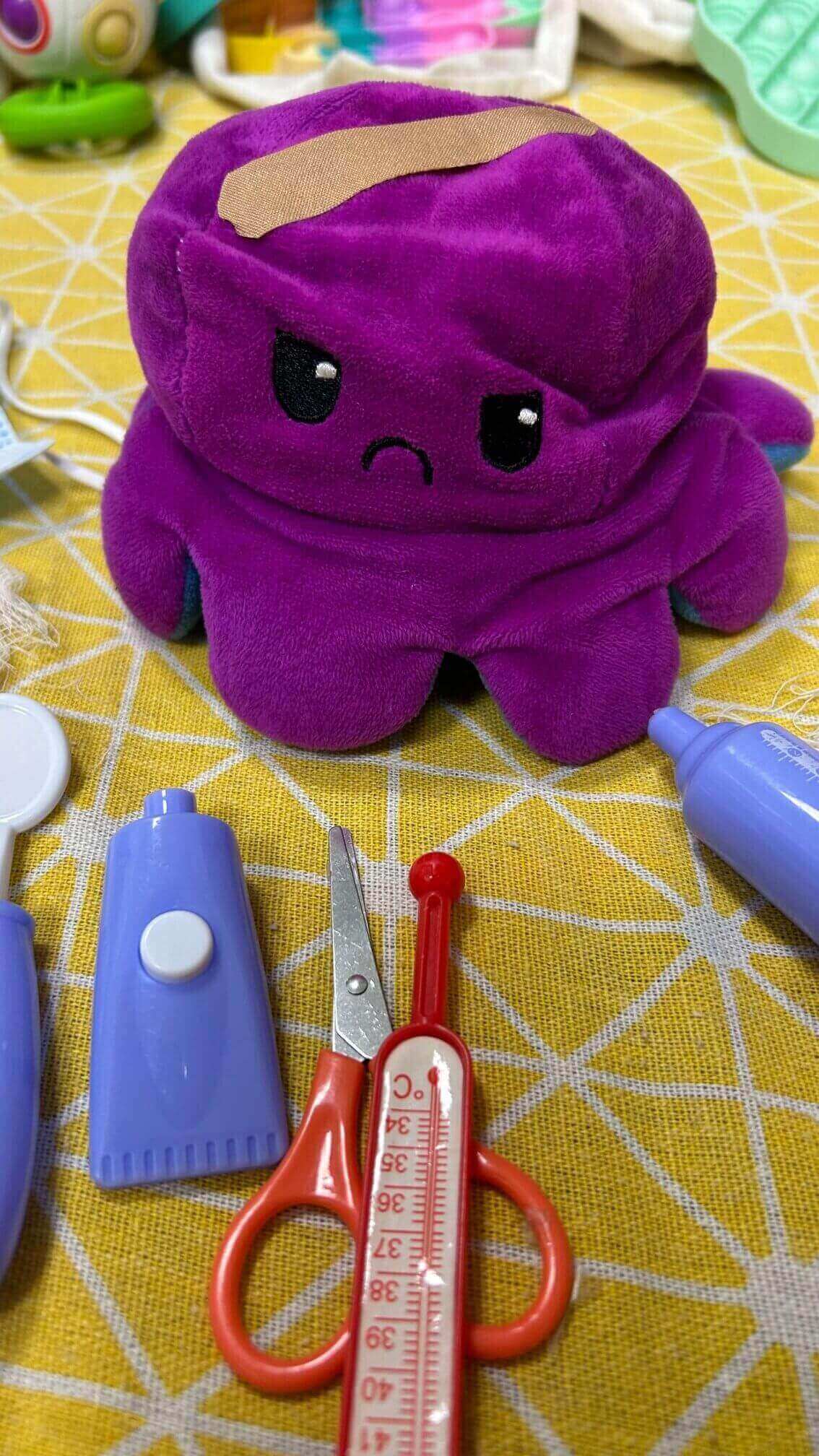
Sad Octopus
This sad octopus represents emotional expression during medical play — a common theme in Play Therapy where children explore experiences of injury, care, and recovery through role play and empathy.